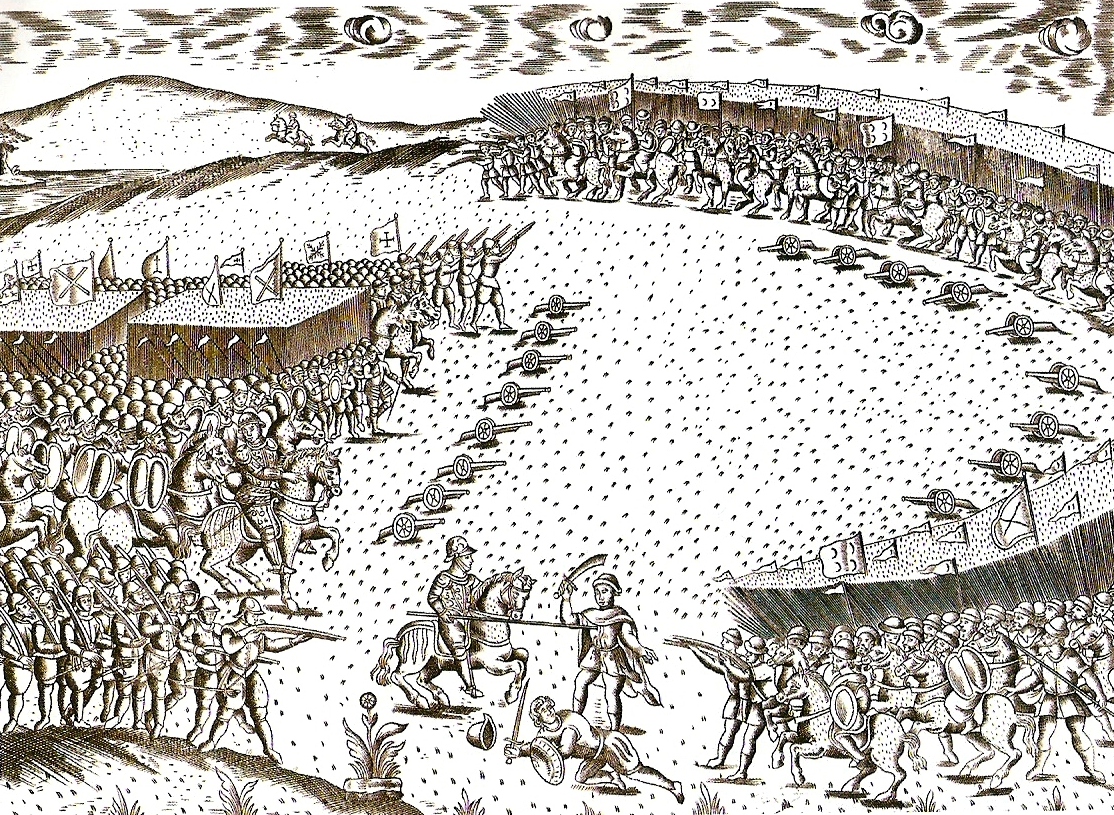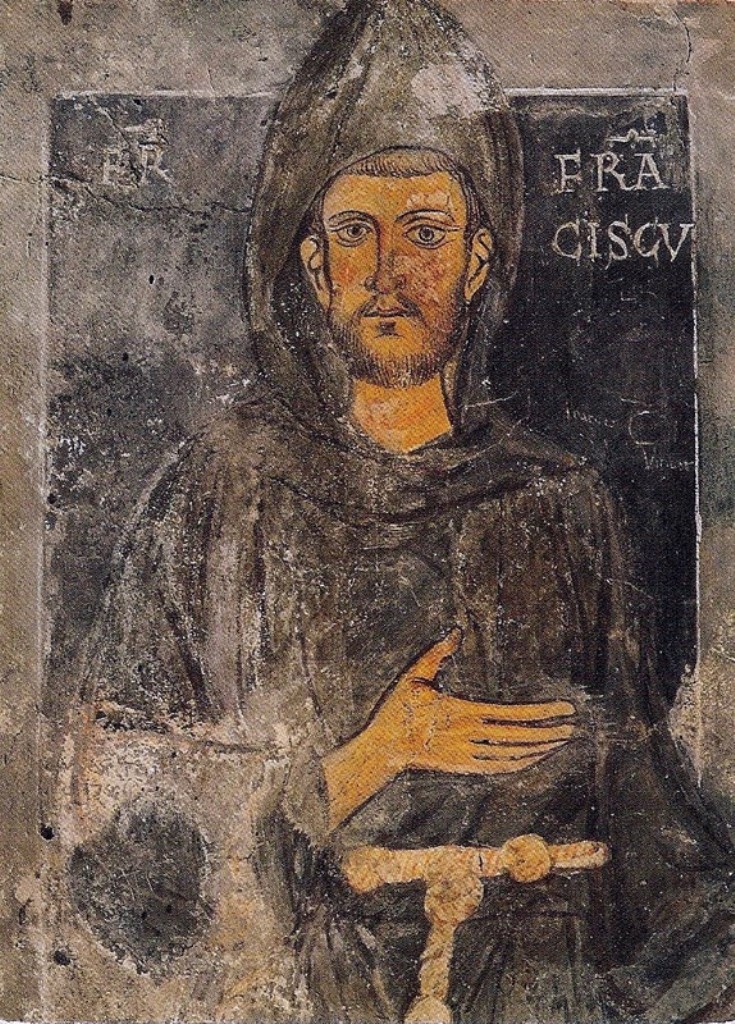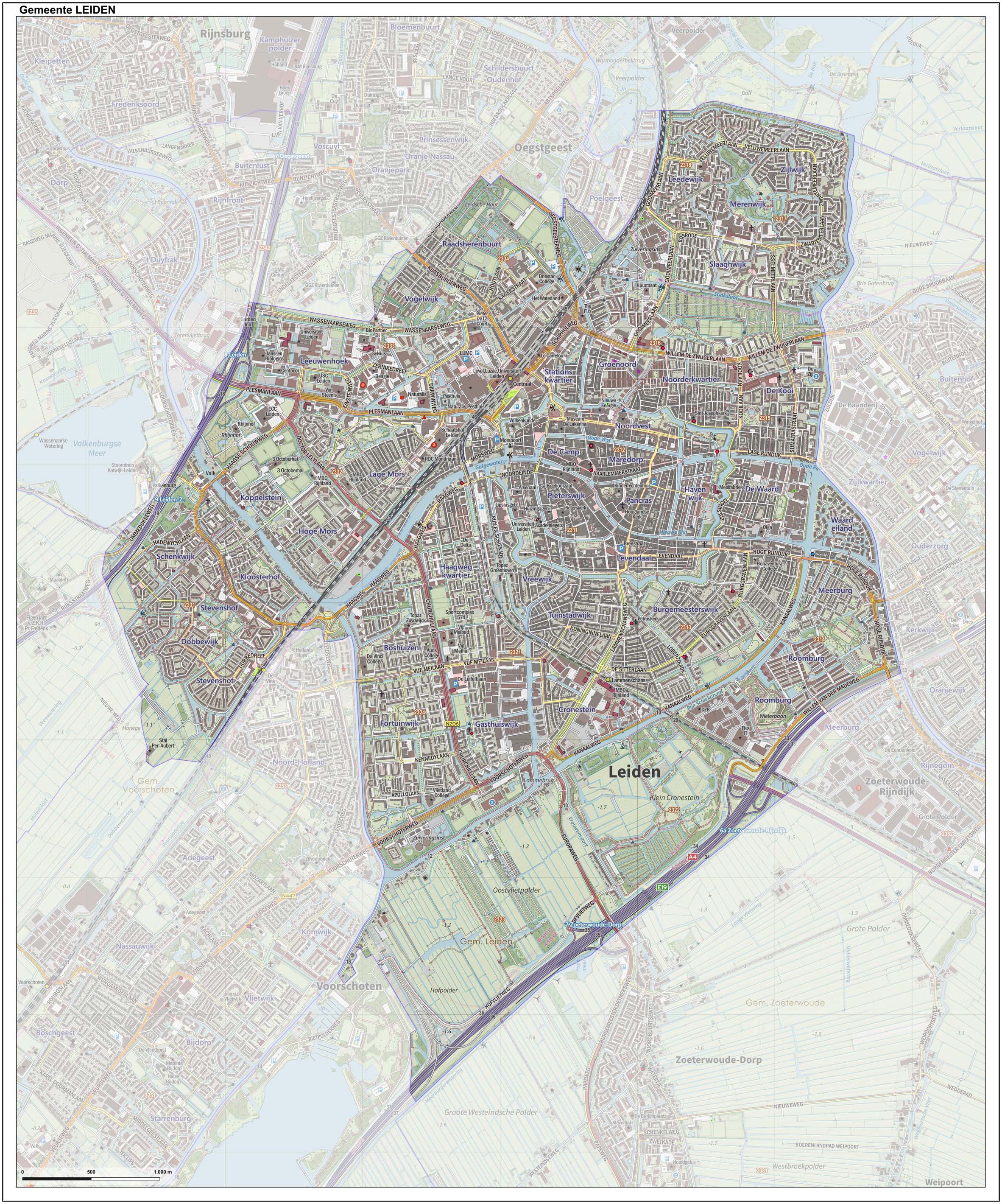|
Alteratie
The Alteratie (Eng: Alteration) is the name given to the change of power in Amsterdam on May 26, 1578, when the Catholic city government was deposed in favor of a Protestant one. The coup should be seen in the context of the greater Dutch Revolt that was breaking out in this time. Trade interests played an important role, because Amsterdam was becoming isolated as surrounding cities and towns joined the revolt, and other cities were threatening to take over its trade. No one was injured or killed during the coup. On May 29, a new city council was formed, consisting of 30 Calvinists and 10 Catholics. Already after a few months, plans were presented to expand the city and the harbor on the eastern side (Lastage), and to construct new defensive fortifications (Oude Schans). Conditions before the Alteratie After the Pacification of Ghent in 1576, Amsterdam was forced to subject itself to the Prince of Orange and the States of Holland, but the city government wanted to stay loyal to King ... [...More Info...] [...Related Items...] OR: [Wikipedia] [Google] [Baidu] |
Lastage
Lastage is a neighborhood in the Centrum borough of Amsterdam, Netherlands. It is located between the Geldersekade and Oudeschans canals, just east of old medieval city. Today, the neighbourhood is also known as Nieuwmarktbuurt due to the fact that the Nieuwmarkt is comprised in the area; it is protected as a heritage site. History In the 16th century, the marshy land east of the city developed into an industrial and port area of Amsterdam. Halfway through the 16th century, five ropewalks, some ship's mast factories, and a few shipyards for the caulking and repairing of ships were established here. Due to the location of the area outside the city wall, taxes were much lower and spatial planning regulations were much less strict. The adjacent bend in the IJ inlet called ''Waal'' was shallow, which, although unsuitable for merchant vessels, was ideal for docking ships in winter. During the Guelderian Wars, the area came under threat several times by the troops of Charles of Gueld ... [...More Info...] [...Related Items...] OR: [Wikipedia] [Google] [Baidu] |
1578 In The Habsburg Netherlands
__NOTOC__ Year 1578 ( MDLXXVIII) was a common year starting on Wednesday (link will display the full calendar) of the Julian calendar. Events January–June * January 31 – Battle of Gembloux: Spanish forces under Don John of Austria and Alexander Farnese defeat the Dutch; Farnese begins to recover control of the French-speaking Southern Netherlands. * April 27 – The Duel of the Mignons claims the lives of two favorites of Henry III of France, and two favourites of Henry I, Duke of Guise. * May 26 – The ''Alteratie'' in Amsterdam ends Catholic rule, and opens Catholic worship there. * May 31 – Martin Frobisher sails from Harwich, England to Frobisher Bay, Canada, on his third expedition. * June 11 – Humphrey Gilbert is granted letters patent from the English crown to establish a colony in North America. July–December * July – Martin Frobisher holds the first Thanksgiving celebration by Europeans in North America, on Newfou ... [...More Info...] [...Related Items...] OR: [Wikipedia] [Google] [Baidu] |
Walls Of Amsterdam
The walls of Amsterdam () were built in the Middle Ages to protect the city against attack. The Medieval walls were replaced with a series of bastions in the 17th century. In the 19th century, the walls were torn down and replaced with the Defence Line of Amsterdam (''Stelling van Amsterdam''), a fortification line which encircled Amsterdam at a distance from the city. Remains of the Medieval and 17th-century defenses include the former city gates Waag and Munttoren, as well as the defensive tower Schreierstoren and the watchtower Montelbaanstoren. History Earthen walls Around the year 1300, an earthen wall had been erected behind the Nieuwendijk dike. Traces of this wall were discovered during archeological excavations around Nieuwezijds Kolk in 1994. Following the in 1303, Count William III of Holland withdrew the privilege of Amsterdam to have defenses, forcing the town to remove the wall. [...More Info...] [...Related Items...] OR: [Wikipedia] [Google] [Baidu] |
Heilige Stede
Nieuwezijds Kapel (Dutch - New Side's Chapel), or Heilige Stede (Dutch - holy site) or Chapel of the Heilige Stede refers to a site in Amsterdam that includes shops and a Dutch Reformed church built in 1908 on the site of a church once called the Heilige Stede, originally built in the 15th century to replace a chapel that burned in a city fire of 1452. That original chapel had been built in 1347 as a result of the miracle of Amsterdam (15 March 1345), located on the Kalverstraat where this miracle with the eucharistic host occurred. History In the beeldenstorm of 1566 the chapel was severely damaged, and after the Alteratie, the chapel came into Protestant hands, when it was renamed the ''Nieuwezijds Chapel'' by them. The yearly procession that until then had taken place by the Catholics, was forbidden. In 1881, this tradition was reinstated as the Stille Omgang. The building was deconstructed in 1908, after the Protestant church fathers decided to consolidate the space an ... [...More Info...] [...Related Items...] OR: [Wikipedia] [Google] [Baidu] |
Oude Kerk (Amsterdam)
The Oude Kerk ( English: Old Church) is Amsterdam’s oldest building and youngest art institutes (since 2012). The building was founded circa 1213 and consecrated in 1306 by the bishop of Utrecht with Saint Nicolas as its patron saint. After the Reformation in 1578, it became a Calvinist church, which it remains today. It stands in De Wallen, now Amsterdam's main red-light district. The square surrounding the church is the Oudekerksplein. History By around 1213, a wooden chapel had been erected at the location of today's Oude Kerk. Over time, this structure was replaced by a stone church that was consecrated in 1306. The church has seen a number of renovations performed by 15 generations of Amsterdam citizens. The church stood for only a half-century before the first alterations were made; the aisles were lengthened and wrapped around the choir in a half circle to support the structure. Not long after the turn of the 15th century, north and south transepts were added to the ... [...More Info...] [...Related Items...] OR: [Wikipedia] [Google] [Baidu] |
Oude Stadshuis En De Waag Op De Dam
Awadh (), known in British historical texts as Avadh or Oudh, is a region in the modern Indian state of Uttar Pradesh, which was before independence known as the United Provinces of Agra and Oudh. It is synonymous with the Kośāla region of Hindu, Bauddh, and Jain scriptures. Awadh is bounded by the Ganges Doab to the southwest, Rohilkhand to the northwest, Nepal to the north, and Bhojpur-Purvanchal to the east. Its inhabitants are referred to as Awadhis. It was established as one of the twelve original subahs (top-level imperial provinces) under 16th-century Mughal emperor Akbar and became a hereditary tributary polity around 1722, with Faizabad as its initial capital and Saadat Ali Khan as its first Subadar Nawab and progenitor of a dynasty of Nawabs of Awadh (often styled Nawab Wazir al-Mamalik). The traditional capital of Awadh is Lucknow, also the station of the British Resident, which now is the capital of Uttar Pradesh. Etymology The word Awadh is supposed to be ... [...More Info...] [...Related Items...] OR: [Wikipedia] [Google] [Baidu] |
16th-century Revolutions
The 16th century begins with the Julian year 1501 ( MDI) and ends with either the Julian or the Gregorian year 1600 ( MDC) (depending on the reckoning used; the Gregorian calendar introduced a lapse of 10 days in October 1582). The 16th century is regarded by historians as the century which saw the rise of Western civilization and the Islamic gunpowder empires. The Renaissance in Italy and Europe saw the emergence of important artists, authors and scientists, and led to the foundation of important subjects which include accounting and political science. Copernicus proposed the heliocentric universe, which was met with strong resistance, and Tycho Brahe refuted the theory of celestial spheres through observational measurement of the 1572 appearance of a Milky Way supernova. These events directly challenged the long-held notion of an immutable universe supported by Ptolemy and Aristotle, and led to major revolutions in astronomy and science. Galileo Galilei became a champion o ... [...More Info...] [...Related Items...] OR: [Wikipedia] [Google] [Baidu] |
16th Century In Amsterdam
16 (sixteen) is the natural number following 15 and preceding 17. 16 is a composite number, and a square number, being 42 = 4 × 4. It is the smallest number with exactly five divisors, its proper divisors being , , and . In English speech, the numbers 16 and 60 are sometimes confused, as they sound very similar. Sixteen is the fourth power of two. For this reason, 16 was used in weighing light objects in several cultures. The British have 16 ounces in one pound; the Chinese used to have 16 ''liangs'' in one ''jin''. In old days, weighing was done with a beam balance to make equal splits. It would be easier to split a heap of grains into sixteen equal parts through successive divisions than to split into ten parts. Chinese Taoists did finger computation on the trigrams and hexagrams by counting the finger tips and joints of the fingers with the tip of the thumb. Each hand can count up to 16 in such manner. The Chinese abacus uses two upper beads to represent the 5s and 5 low ... [...More Info...] [...Related Items...] OR: [Wikipedia] [Google] [Baidu] |
New Church (Amsterdam)
The Nieuwe Kerk (, ''New Church'') is a 15th-century church in Amsterdam located on Dam Square, next to the Royal Palace. Formerly a Dutch Reformed Church parish, it now belongs to the Protestant Church in the Netherlands. Current uses The Nieuwe Kerk is no longer used for church services but is used as an exhibition space. It is also used for organ recitals. There is a café in one of the buildings attached to the church that has an entrance to the church (during opening hours). There is a museum store inside the entrance that sells postcards, books, and gifts having to do with the church and its exhibitions. The church is used for Dutch royal investiture ceremonies (as per Article 32 of the Dutch Constitution) most recently that of King Willem-Alexander in 2013, as well as royal weddings, most recently the wedding of Willem-Alexander to Máxima in 2002. The investitures of Queens Wilhelmina, Juliana and Beatrix also took place there. History After the Oude Kerk ("Old Chu ... [...More Info...] [...Related Items...] OR: [Wikipedia] [Google] [Baidu] |
Franciscans
, image = FrancescoCoA PioM.svg , image_size = 200px , caption = A cross, Christ's arm and Saint Francis's arm, a universal symbol of the Franciscans , abbreviation = OFM , predecessor = , merged = , formation = , founder = Francis of Assisi , founding_location = , extinction = , merger = , type = Mendicant Order of Pontifical Right for men , status = , purpose = , headquarters = Via S. Maria Mediatrice 25, 00165 Rome, Italy , location = , coords = , region = , services = , membership = 12,476 members (8,512 priests) as of 2020 , language = , sec_gen = , leader_title = Motto , leader_name = ''Pax et bonum'' ''Peace and llgood'' , leader_title2 = Minister General , leader_name2 = ... [...More Info...] [...Related Items...] OR: [Wikipedia] [Google] [Baidu] |
Leiden
Leiden (; in English and archaic Dutch also Leyden) is a city and municipality in the province of South Holland, Netherlands. The municipality of Leiden has a population of 119,713, but the city forms one densely connected agglomeration with its suburbs Oegstgeest, Leiderdorp, Voorschoten and Zoeterwoude with 206,647 inhabitants. The Netherlands Central Bureau of Statistics (CBS) further includes Katwijk in the agglomeration which makes the total population of the Leiden urban agglomeration 270,879, and in the larger Leiden urban area also Teylingen, Noordwijk, and Noordwijkerhout are included with in total 348,868 inhabitants. Leiden is located on the Oude Rijn, at a distance of some from The Hague to its south and some from Amsterdam to its north. The recreational area of the Kaag Lakes ( Kagerplassen) lies just to the northeast of Leiden. A university city since 1575, Leiden has been one of Europe's most prominent scientific centres for more than four centuri ... [...More Info...] [...Related Items...] OR: [Wikipedia] [Google] [Baidu] |


_-_a_church_with_a_wodden_roof.jpg)



